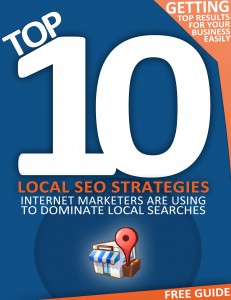Three simple words, Return on Investment, have been at the center of business decisions for centuries.
 This traditional formula is used in each and every department of a functioning business. From finance to marketing, companies need to know that resources being spent are adding to revenue and profit for the business at the end of the day. While this equation is pretty straightforward for some situations, it can be much more complicated for others. Calculating the ROI of traditional marketing efforts has always been somewhat abstract. Applying this formula to digital and internet marketing only becomes more complex.
This traditional formula is used in each and every department of a functioning business. From finance to marketing, companies need to know that resources being spent are adding to revenue and profit for the business at the end of the day. While this equation is pretty straightforward for some situations, it can be much more complicated for others. Calculating the ROI of traditional marketing efforts has always been somewhat abstract. Applying this formula to digital and internet marketing only becomes more complex.
Retailers and business are operating in an increasingly complicated marketing arena. One of the most significant factors is that consumers now rely on multiple marketing channels, both offline and online, when making purchasing decisions. Today’s marketing channels include social, search, television, radio, email, mobile, print, blogs, reviews, billboards, infographics, press releases, PPC, and tradeshows. The list goes on and on. These different channels complement each other and provide synergies for the overall marketing campaign. It is impossible to attribute additional sales to a single channel of influence these days. Not to mention that it is inaccurate and irresponsible.
Measuring the ROI of internet marketing comes with both new challenges and opportunities. On the one hand, it becomes more difficult to prove the worth of individual channels and decipher how certain data relates to the overall ROI. However, internet marketing allows us to use analytics to collect highly detailed and specific data about the habits of our target audience. Here are a few examples of the benefits of analytics:
- Web Analytics to observe where website users come from, what pages they view, and what they purchase. You can also test the effectiveness of different webpages through split testing.
- Video Analytics to observe how many people viewed the video, how long they viewed it for, what part they stopped viewing at, and even what they did immediately after viewing the video.
- Social Analytics to track the number of fans, likes, replies, views, tweets, shares, reach, and people talking about your page. These analytics also provide an in-depth look at demographics.
There are also additional factors that need to be taken into consideration when looking at ROI. These include the marketing campaign’s impact on raising brand awareness, engaging interest, building customer loyalty, and stimulating sales. Do not discount a single channel due to the perception that it may not be contributing to a directly traceable ROI. Search, mobile, video, email, and social all play pivotal roles in the overall internet marketing strategy.

Click to Schedule a FREE 1-1 Strategy Session with us. During this Strategy Session we’ll take the time to do the research on your firm to show you your unique SEO plan. Click Here to Learn More about our Strategy Sessions.
For more FREE articles and videos like this, simply give me your name and email below and I’ll send this TOP 10 Local SEO Secrets and How to Profit from the Internet.
We promise, I’ll respect your email inbox and never share or sell your information.

